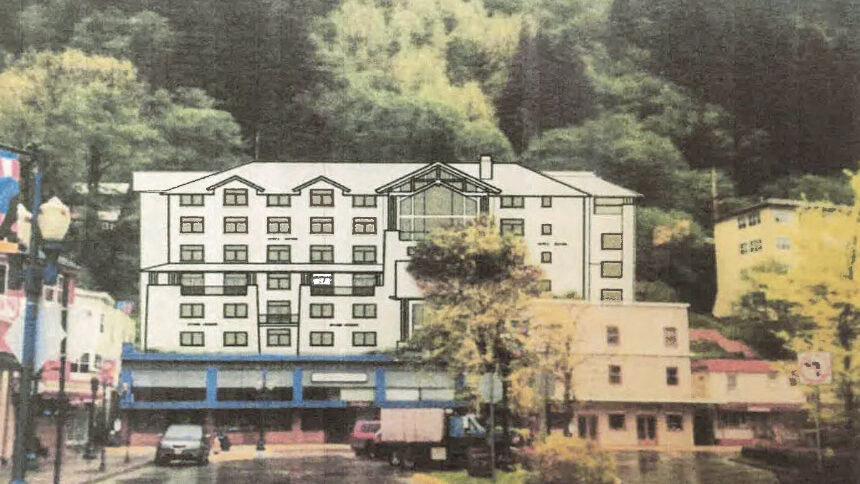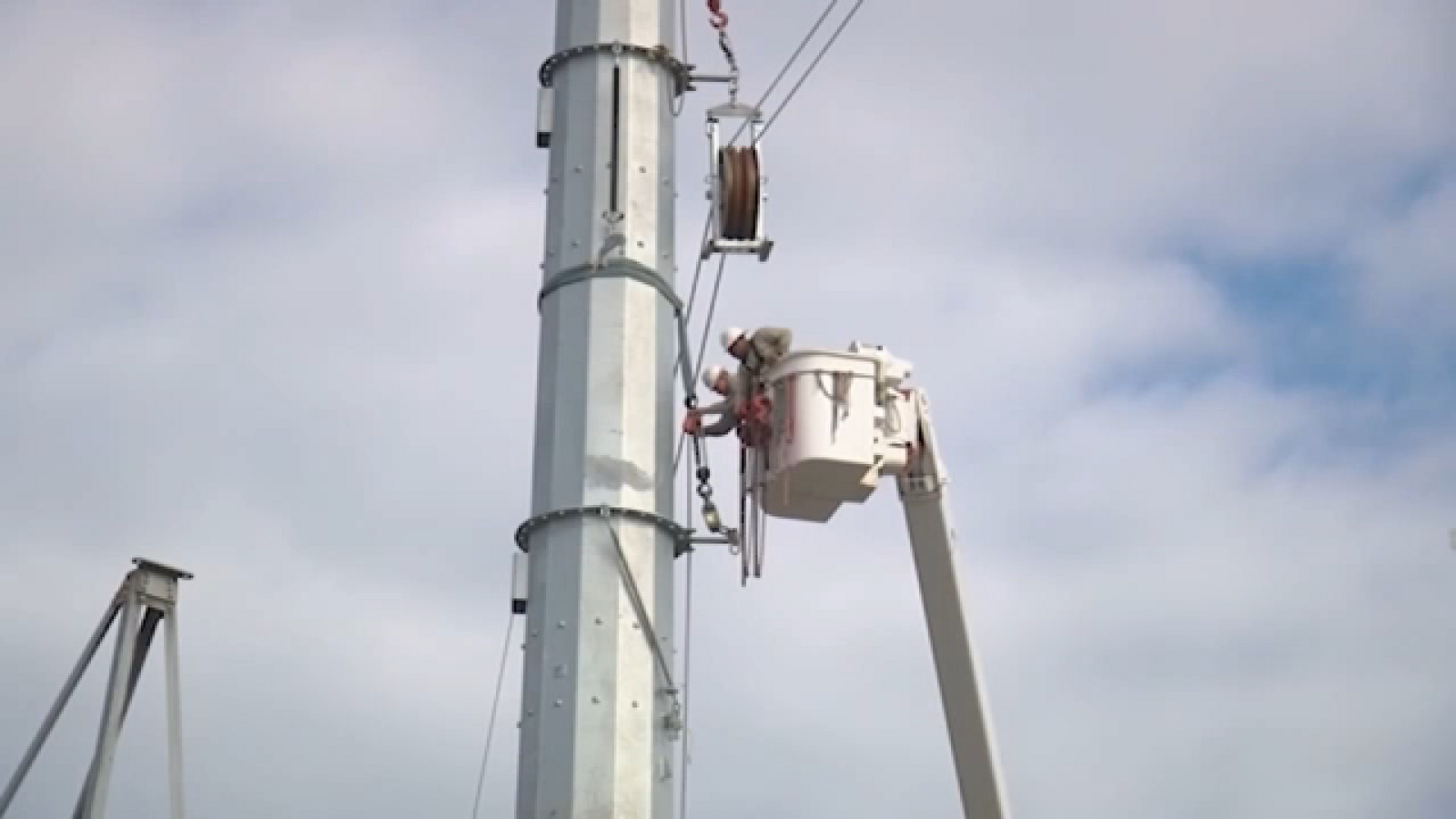A developer’s plan to build dozens of new downtown apartments failed. He blames the city. – KTOO

Report on the Cancellation of the Gastineau Lodge Apartment Project
Executive Summary
A proposed 72-unit workforce housing development in downtown Juneau, the Gastineau Lodge Apartment complex, has been terminated prior to construction. The project’s failure highlights a significant conflict between the need for urban housing and the enforcement of public safety regulations, directly impacting the local pursuit of several Sustainable Development Goals (SDGs). The core of the dispute involves the developer’s inability to meet municipal fire and life safety codes, specifically the requirement for secondary emergency access in a hazardous location. This case serves as an example of the challenges in balancing rapid development (SDG 11), economic support (SDG 8), and community safety and resilience (SDG 3, SDG 11.5).
Project Analysis in the Context of Sustainable Development Goals
Project Objectives and Alignment with SDG 11
The Gastineau Lodge project was designed to address a critical need for workforce housing, a key component of sustainable urban development.
- Project Scope: A six-story, 72-unit furnished apartment building intended for the local workforce.
- SDG 11 (Sustainable Cities and Communities): The project was in direct alignment with Target 11.1, which aims to ensure access for all to adequate, safe, and affordable housing. Its cancellation represents a significant setback for this goal in Juneau.
Site Location and Environmental Risks
The chosen location for the development presented considerable safety and logistical challenges, invoking concerns related to disaster risk reduction as outlined in the SDGs.
- Geographic Hazard: The site is located on the Mount Roberts hillside, an area subject to landslides that have recently damaged homes and displaced residents.
- Access Limitations: The property is on Gastineau Avenue, a narrow, dead-end street that poses difficulties for vehicle maneuverability, particularly for emergency services.
- SDG 11.5 (Reduce Disaster Impact): The municipality’s focus on these risks reflects an adherence to the principles of reducing the vulnerability of human settlements to natural disasters.
Conflict Assessment: Housing Development vs. Public Safety Mandates
Municipal Position on Safety and Regulatory Compliance
The City and Borough of Juneau prioritized public safety and adherence to established building codes, citing non-negotiable risks associated with the project’s location and design.
- Fire Code Violation: Capital City Fire/Rescue identified that the addition of 72 units would push Gastineau Avenue over the 100-unit threshold, legally mandating a second point of emergency access, which the project lacked.
- Commitment to Safety Standards: The Community Development Department asserted that ensuring safe egress is a minimum requirement for housing and that development cannot proceed if safety cannot be guaranteed. This aligns with SDG 3 (Good Health and Well-being) by working to prevent injury and loss of life.
- Regulatory Responsibility: The city maintained that it is the developer’s responsibility to meet code requirements, not the municipality’s role to facilitate a non-compliant project.
Developer’s Position and Economic Implications
The developer, Steve Soenksen, contended that municipal requirements were unrealistic and accused the city of obstructing necessary housing development.
- Allegation of Obstruction: The developer stated the municipality was “stuck on saying no” and should have assisted in creating the required secondary access, which would benefit the entire street.
- Impact on Workforce and Economy (SDG 8): The failure to provide over 70 units of workforce housing directly impacts the local economy and the ability to attract and retain workers, undermining progress toward SDG 8 (Decent Work and Economic Growth).
- Loss of Future Investment: The developer has withdrawn plans for an additional 220 apartments, signaling a broader negative impact on the city’s housing supply.
Institutional Failures and Project Outcomes
Breakdown in Public-Private Partnership (SDG 17)
The project’s demise illustrates a failure in collaboration between the private developer and public institutions. Despite initial approval of a conditional land-use permit by the Planning Commission, the inability to resolve the safety code requirements with the Community Development Department points to a breakdown in the partnership, a challenge to the principles of SDG 17 (Partnerships for the Goals).
Final Status and Repercussions
The conflict resulted in the complete termination of the project, with lasting consequences for the developer and the community’s housing goals.
- Permit Expiration: The project’s conditional land-use permit has expired.
- Project Abandonment: The developer has ceased all efforts to proceed with the Gastineau Lodge and other planned downtown housing projects.
- Financial Obligation: The developer is required to repay a $250,000 predevelopment loan from the city’s affordable housing fund.
- Setback for SDG 11: The lots remain vacant, and a critical opportunity to expand the city’s housing stock and advance toward sustainable community goals has been lost.
Sustainable Development Goals (SDGs) Addressed
The issues highlighted in the article are primarily connected to the following Sustainable Development Goals:
-
SDG 11: Sustainable Cities and Communities
This is the most relevant SDG as the article’s central theme is urban development, specifically the conflict between the need for housing and the necessity of ensuring safety and resilience in a city. The project involved building “70 units of new workforce housing” in downtown Juneau, directly addressing urban housing needs. However, the project was halted due to concerns about public safety, including its location in a “hazardous location — an area subject to landslides” and inadequate access for emergency services, which relates to making cities safe and resilient.
-
SDG 9: Industry, Innovation and Infrastructure
This goal is relevant because a critical point of failure for the project was infrastructure-related. The city’s fire code required “at least two access points for a road that has more than 100 units.” The inability to meet this infrastructure requirement for emergency access on Gastineau Avenue was a key reason the building permit could not be issued. This highlights the importance of developing resilient and safe infrastructure to support housing and community well-being.
Specific SDG Targets Identified
Based on the article’s content, the following specific targets can be identified:
-
Target 11.1: By 2030, ensure access for all to adequate, safe and affordable housing and basic services.
The project aimed to construct a “72-unit apartment building” intended as “workforce housing,” directly addressing the need for adequate housing. The conflict arose over the “safe” component of this target. The city, through its Community Development Department and fire department, blocked the project because it could not “be made safe” due to its location in a landslide-prone area and its failure to meet fire code for emergency access.
-
Target 11.3: By 2030, enhance inclusive and sustainable urbanization and capacity for participatory, integrated and sustainable human settlement planning and management.
The article details a breakdown in the “human settlement planning and management” process. While the planning commission initially approved a permit, the project ultimately failed due to a conflict between the developer and the city’s development department over code requirements. The developer’s statement that “the city’s been making unrealistic requirements on housing projects” and the city’s response that “it’s on the developer to bring their development to fruition” exemplify the challenges in achieving integrated and sustainable planning.
-
Target 11.5: By 2030, significantly reduce the number of deaths and the number of people affected… caused by disasters… with a focus on protecting the poor and people in vulnerable situations.
This target is directly relevant due to the project’s location on the Mount Roberts hillside, an “area subject to landslides.” The article explicitly mentions that in recent years, “multiple landslides damaged homes and displaced residents” in the vicinity. The city’s refusal to issue a building permit due to safety concerns is a direct application of a disaster risk reduction strategy, aimed at preventing the construction of a high-density residence in a hazardous zone, thereby protecting future residents.
-
Target 9.1: Develop quality, reliable, sustainable and resilient infrastructure… to support economic development and human well-being.
The fire chief’s statement that “the fire code requires at least two access points for a road that has more than 100 units” points directly to the need for resilient infrastructure. The dead-end nature of Gastineau Avenue and the lack of a second access point for emergency vehicles made the existing infrastructure inadequate for the proposed development. The failure to create this necessary infrastructure was a primary obstacle to the project.
Indicators for Measuring Progress
The article mentions or implies several indicators that can be used to measure progress towards the identified targets:
-
Number of new, safe housing units created.
The article provides a specific number: “72 units.” The failure of the project means the progress on this indicator is zero. This directly measures the outcome related to Target 11.1. The city’s safety assessment (landslide risk, fire access) serves as a qualitative indicator for the “safe” aspect of housing.
-
Implementation of local disaster risk reduction strategies.
The city’s enforcement of its building and fire codes in a known landslide area is a clear indicator of an active disaster risk reduction strategy. The Community Development Director’s statement, “Not all land is appropriate for housing if it can’t be made safe,” shows that risk assessment is part of the planning process, which relates to Target 11.5.
-
Compliance with infrastructure safety codes for new developments.
The specific rule cited by the fire chief—the requirement for two access points for roads with over 100 units—is a measurable indicator of infrastructure resilience. The project’s inability to comply with this code is a direct measure of its failure to meet the standards of Target 9.1.
-
Effectiveness of urban planning and permit processes.
An implied indicator for Target 11.3 is the success rate of proposed housing projects navigating the municipal planning and permit system. In this case, the project’s death after receiving a conditional permit and the developer’s subsequent decision to abandon all future plans (“once they killed this one, I have no resources to try and do anything else, nor desire”) indicates a potential dysfunction or lack of integration in the planning process that discourages development.
SDGs, Targets, and Indicators Analysis
| SDGs | Targets | Indicators Identified in the Article |
|---|---|---|
| SDG 11: Sustainable Cities and Communities | Target 11.1: Ensure access for all to adequate, safe and affordable housing. | The number of planned new housing units (72) versus the number created (0). The assessment of safety based on location in a landslide-prone area. |
| SDG 11: Sustainable Cities and Communities | Target 11.3: Enhance inclusive and sustainable urbanization and capacity for… sustainable human settlement planning and management. | The failure of a project after initial permit approval, indicating a conflict in the planning and management process. The developer’s withdrawal from future projects. |
| SDG 11: Sustainable Cities and Communities | Target 11.5: Significantly reduce the number of people affected… caused by disasters. | The city’s enforcement of building codes as a local disaster risk reduction strategy, specifically citing the area’s history of landslides. |
| SDG 9: Industry, Innovation and Infrastructure | Target 9.1: Develop quality, reliable, sustainable and resilient infrastructure. | The specific fire code requirement for “at least two access points” for a road serving over 100 units, which serves as a standard for resilient infrastructure. |
Source: ktoo.org
What is Your Reaction?
 Like
0
Like
0
 Dislike
0
Dislike
0
 Love
0
Love
0
 Funny
0
Funny
0
 Angry
0
Angry
0
 Sad
0
Sad
0
 Wow
0
Wow
0


















































.jpg.webp?itok=0ZsAnae9#)



/environment-climate-change-and-health-(ech)/water-sanitation-hygiene-and-health-(wsh)/landfill-tuvalu-36092.tmb-1200v.jpg?sfvrsn=5c21fe40_1#)




















